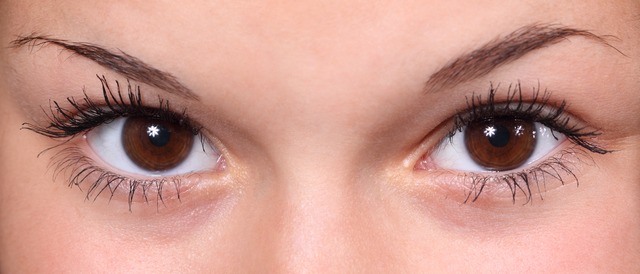 Re-published with Permission from Wicklander-Zulawski
Re-published with Permission from Wicklander-Zulawski
By Chris Norris, CFI
Emotions can run the full gamut for both parties involved in an investigative interview. Both the interviewer and the subject may feel the push and pull of a wide range of emotions. From happiness to sadness, fear and surprise, disgust, anger and even contempt, the interview process can produce the ebbs and flows of a full set of emotions one might feel throughout an entire day.
During the course of an interview, skilled investigators can recognize and identify a variety of emotions that might guide the interviewer through the process and help to understand and identify the level of cooperation and authenticity from the subject.
For instance, you might observe moments of surprise from your subject while you are building credibility in your investigation with the WZ Introductory Statement. You may see the emotion of fear and the fear of detection emerge through the many physiological changes the body goes through during fight or flight. You may even recognize emotions that present themselves as your subject approaches a more submissive stage, passing through a phase of resistance, prior to making a rational or emotional decision to be truthful.
Emotions play a huge role during the interview process, but what are emotions after all? Emotions can be described as being thoughts, and behavior reactions to those thoughts, combined to manifest themselves into emotions. Have you ever considered how your emotions may impact the level of cooperation from your subject? For example, your thoughts of growing impatient with your subject’s lack of honesty and your behavior reaction (both verbal and non-verbal) to those thoughts begins to reveal the emotions of frustration, anger or even contempt for your subject. Revealing such emotions does not encourage cooperation.
As an interviewer, managing your own emotions can play an integral part in obtaining the truth from your subject. The difficulty with this task is that emotions are not consciously controlled. The part of the brain that deals with emotions is the limbic system and emotions are believed to be strongly linked to memory and experience. Understanding this link gives you the key to managing your emotional response during an interview. Your emotional response may not have much to do with your current situation, it could be caused by a prior experience. If you are aware of these emotions, you can control them so they don’t have a negative impact on your interview.
One of the most important things you should consider when conducting an interview is remaining objective throughout the entire process and projecting a sense of neutrality to the individual you are interviewing. By keeping your emotions in check and becoming a neutral observer, you place yourself in a position of being non-judgmental to your subject. You become the understanding mediator who is there to help them with the sometimes difficult task of being honest. Nothing you hear should surprise you and someone’s lack of cooperation and honesty shouldn’t frustrate you. Be fully aware of your potential emotional reaction and remain neutral and understanding throughout the entire process.
Another key benefit of maintaining a sense of neutrality during the interview is the process of mirroring. Mirroring is the subconscious replications of another person’s communication signs. If we instinctively imitate gestures, speech and attitudes of one another, imagine how much influence your own emotions might have on your subject. By revealing adverse emotions, like frustration as listed in the example above, the natural process of mirroring may push your subject to feel frustrated or even angry themselves. If you are able to maintain a neutral demeanor during the interview through the process of mirroring, you are likely to have a greater opportunity of keeping your subject’s emotions in check as well.
As an interviewer you should consider your presentation to your subject in terms of posture, facial expressions, illustrators, eye contact, pacing, volume, intonation and actual words, as well as your own emotional balance. Remember, volume invites volume. If you get loud, then they get loud – then you get louder and so on. This becomes non-productive as negative emotions begin to take over the setting and general tone of the interview. Our goal is to de-escalate the negative emotions rather than feed into them with our own emotional missteps.
Controlling your emotions during an interview can be difficult, but remember that those emotions can be the source of the conflict and lack of cooperation from your subject. Recognize your own emotions, understand the source of the emotional reaction, manage them and assess their impact on your subject. Get to know your emotions and your emotional patterns. If you can develop skills and self-discipline in managing emotions you can become a more effective communicator and interviewer.
For more on body language and job interviews, view some of our past blogs:
6 Steps to Effective Interview Body Language
9 Ways Your Body Language Can Help You Land a Job
 Emotional and facial expression recognition are particularly interesting phenomena. Not only are they both incredibly fundamental to our interactions, but we are rarely even aware of performing them. While we rely heavily on our ability to recognize each other’s faces and emotions, this reliance makes life that much harder for those who struggle with these processes.
Emotional and facial expression recognition are particularly interesting phenomena. Not only are they both incredibly fundamental to our interactions, but we are rarely even aware of performing them. While we rely heavily on our ability to recognize each other’s faces and emotions, this reliance makes life that much harder for those who struggle with these processes. People make a lot of fuss over the cliché that “eyes are the windows of the soul,” but emerging research indicates that this saying may be even more accurate than we think.
People make a lot of fuss over the cliché that “eyes are the windows of the soul,” but emerging research indicates that this saying may be even more accurate than we think.